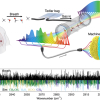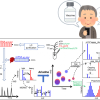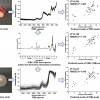ACD/Labs has announced a collaboration with the Extractables and Leachables Safety Information Exchange (ELSIE) consortium of bio/pharmaceutical and medical device companies. In further efforts to support member company scientists involved in extractables and leachables (E&L) research, ELSIE—with the help of ACD/Labs—will launch a database of E&L data. The resource, currently in development and testing, will be available to member companies as an educational and research tool in Q2-2023. It will be accessible through an intuitive web-based interface, which provides robust scientific search options and flexible reporting capabilities.
“ELSIE’s guiding principle from the outset has been to have a forum to share safety data by reducing time and resources needed to gather this data, allowing our member companies to focus on developing safe and efficacious products”, said Uma Bruen, ELSIE Chairperson. “The consortium is committed to expanding the knowledge-gathering and dissemination we currently offer through the ELSIE Safety Information Database beyond toxicological information to include extractable study results on raw materials, single-use products, drug product packaging and delivery systems and medical devices. ACD/Labs understands the science and informatics necessary to build a database that meets the needs of the E&L community. We’re excited to take this leap forward to improve collaboration and data sharing in this area of research.”
“Supporting scientific knowledge management and enabling collaborative research are two areas of focus for ACD/Labs”, said Andrew Anderson, Vice President Innovation & Informatics Strategy, ACD/Labs. “In addition to creating a resource for pre-competitive intelligence, ACD/Labs will also make available to ELSIE members the ability to manage not only their own internal toxicological and extractable data but also leachable study results on their specific products in a similar system, capable of interacting with the ELSIE member system. Organisations need to move away from storing data in static reports and scattered data silos to power their R&D engine with the data they generate.”










